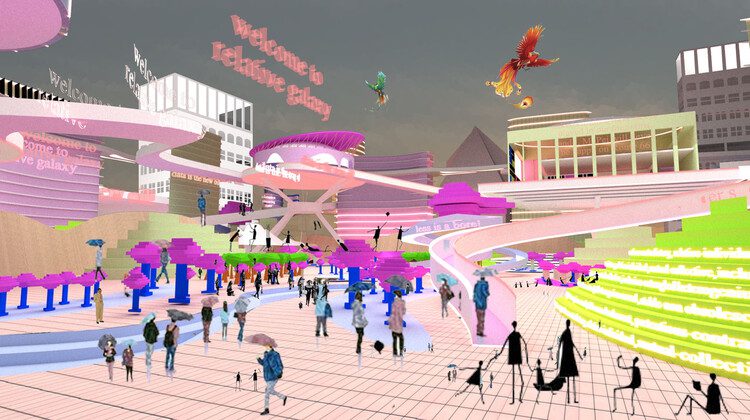You’ll find different opinions and perceptions regarding Metaverse, and everyone is right in their way. There’s indeed a lot of confusion and lack of trust regarding this technology. Some consider this technology revolutionary, while others expect it to be a technocratic nightmare which harms humanity. So, we’ll discuss what people can expect from Metaverse and how it can open up new opportunities if done correctly.
What is Metaverse?
Despite all the buzz surrounding this technology, most individuals still don’t know what Metaverse truly is. It’s a digital ecosystem involving 3D elements that people can view through extended reality (XR). So, why are companies like Meta (formerly known as Facebook) and Microsoft investing billions of dollars in the development of Metaverse?
Well, in Metaverse, the reality can be whatever you want it to be. In the real world, to live through certain experiences, there are many limitations and conditions. However, Metaverse makes everyone equal. People can experience realities that are impossible to witness in their real lives. Your physical appearance won’t matter here. You’ll only be judged on your online behavior, thoughts, and how you want people to see you. It’s a world in which a nerdy kid can be a hero, and a poor kid can own a mansion and a flying car.
Technologies Powering Metaverse
Before discussing the possibilities of the Metaverse, let’s discuss the technologies essential for its development:
o Extended Reality (XR)
Extended Reality (XR) blends our virtual and real worlds to provide an immersive experience. It is an umbrella term covering technologies like Virtual Reality (VR), Augmented Reality (AR), and Mixed Reality (MR). With the use of these immersive technologies, XR can create a virtual world where physical users can own and control their digital avatars and virtual assets.
o Virtual Reality (VR)
Virtual Reality (VR) allows users to interact with virtual 3D visual or sensory elements. It’s one of the immersive technologies covered by XR. Moreover, it creates a digital environment with the help of computer modeling and simulation where users can experience real-world events and environments. For instance, you can attend a concert without actually being there physically. These environments can help your brain process virtual experiences created by VR just like it processes real-life experiences. Even though VR hasn’t fully matured,
o Augmented Reality (AR)
Augmented Reality (AR) combines the view of the real world with virtual 3D or 2D elements. You can find digital details like animation, text, and images overlaid in the real world. Many companies are using AR to enhance user interaction. Moreover, popular games like Pokémon Go have set a new benchmark for AR-based gaming. In 2021, the AR gaming industry reached a valuation of $6.39 billion. This technology can also be beneficial in the e-commerce industry. For instance, furniture retailers like IKEA can use AR to show users how the furniture would look in their homes.
o Mixed Reality (MR)
Mixed Reality (MR) blends the elements of both VR and AR to provide users with a distinctive immersive experience. It combines the virtual and physical worlds to create innovative software solutions. On one end, there’s the physical reality where we humans exist. On the other hand, we have the corresponding virtual or digital reality.
Possibilities of Metaverse
Here are the sectors Metaverse can impact in the future:
o Military
In 2017, the US Army introduced Tactical Augmented Reality, a technology which improves soldiers’ situational awareness in dangerous situations. With this tool, soldiers can have accurate information about the location and positions of their allies and hostile forces. It also functions like a pair of night vision goggles with many more features. With further development and normalization of the Metaverse, we can expect the invention of various sophisticated defense monitoring systems.
o Healthcare
Many health organizations believe that human-machine interactions can make it easier for people to get medical health. Patients can remotely connect to doctors and get medical help without travelling to a hospital or a clinic. In the future, immersive technologies can also assist doctors in learning and speeding up various surgical procedures.
o Construction and Architecture
Metaverse can make the job of architects and interior designers a lot easier. By using immersive technologies like AR and VR, architects and interior designers can simulate their designs and assess the practicality and feasibility of a building or an infrastructure before its construction. They can even virtually create various structures in meta-spaces and see whether their design ideas will work in the real world or not.
Verdict
We still have a long path to cover in order to normalize Metaverse. There are still many hardware and software limitations developers have to take care of. But is Metaverse worth the hype? Definitely! If done right, it can be the next big thing. Hence, Metaverse Development Companies are willing to spend billions of dollars researching and developing this technology.












